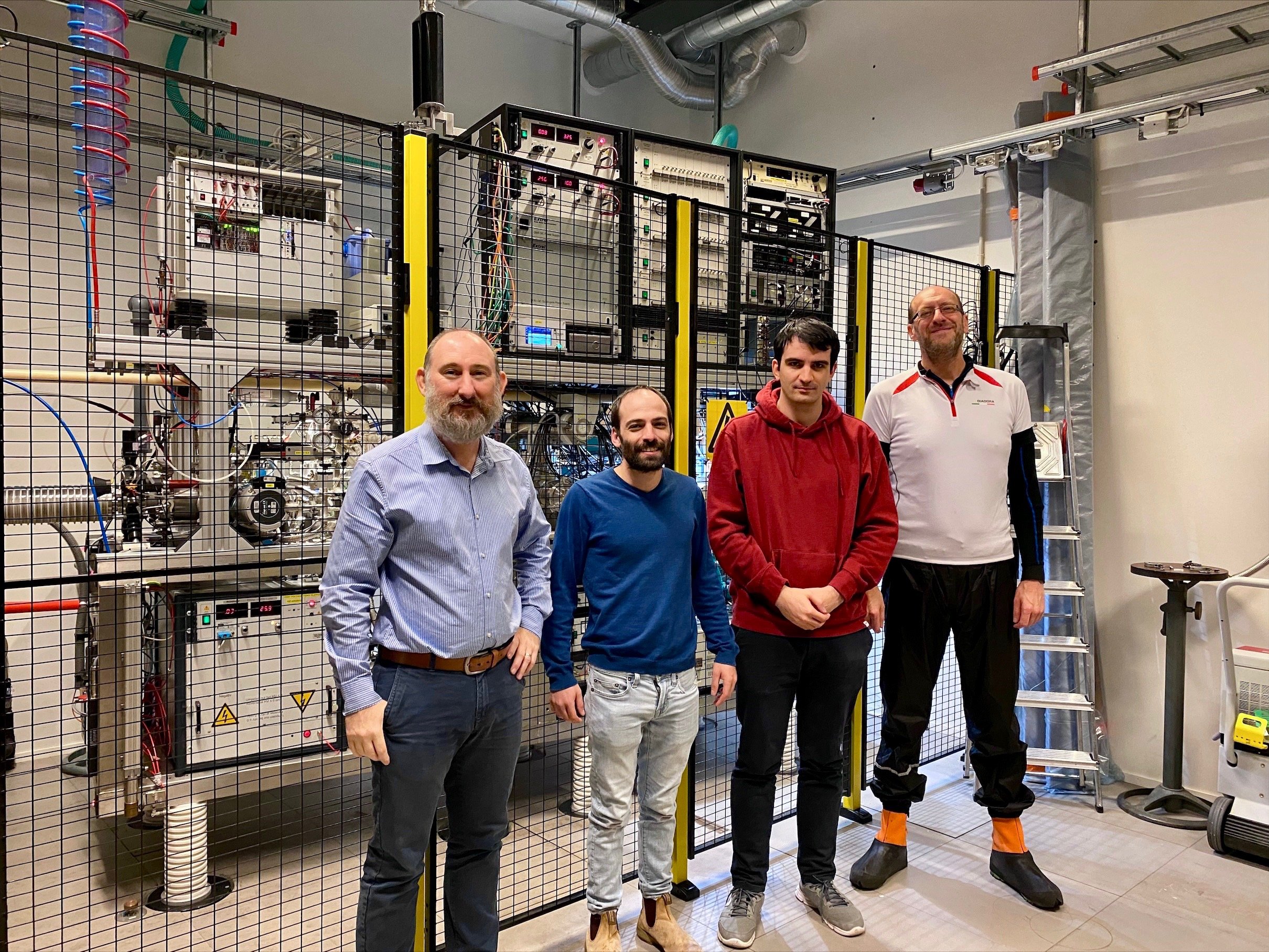Latest publication from DESIREE User Jon Grumer and Gustav Eklund in Physical Review Letters. In this article, Grumer et al have measured the experimental final-state distributions for Mg atoms formed in Mg+ + D− mutual neutralization (MN) reactions at DESIREE and compared with two types of calculations: full-quantum and asymptotic model approaches. Which may describe better this MN process? Which should we choose for more complex iron group systems? Read the full article HERE.
User Profile: Daniel Strasser and Alon Bogot
Left to right: Daniel, Alon, Mathias and Richard
This week the DESIREE infrastructure hosted users from the Hebrew university of Jerusalem, Daniel Strasser and Alon Bogot. The research project aims to understand the mystery of water: what may happen when H3O+ meets OH- in gas phase, proton transfer or electron transfer? The project is in collaboration with local researchers Mathias Poline and Richard Thomas.
What is your research in general?
Mutual neutralization of molecular anions and cations.
How will your experiments at DESIREE further your research?
We will study the mutual neutralization of H3O+ + OH-
Are there any unique capabilities of DESIREE that you are exploiting?
The capability to merge trapped cation and anion beams and record the neutral products of mutual neutralization is unique to the DESIREE setup.
The trapping is essential to study of molecular species, in which internal excitation during the ionization process can be expected to affect the measured mutual neutralization mechanism.
How do you find it to work at DESIREE infrastructure?
So far so good.
User Publication: Survival of polycyclic aromatic hydrocarbon knockout fragments in the interstellar medium
Latest publication from DESIREE User Michael Gatchell in Nature Communications. In this article, Gatchell et al have studied the survival of reactive fragments of the polycyclic aromatic hydrocarbon (PAH) coronene, where individual C atoms have been knocked out in hard collisions with He atoms. Ionic fragments are stored in the DESIREE cryogenic ion-beam storage ring for up to one second. May the defective PAHs survive? Read the full paper here.
More stories behind the paper? Read the Nature blog post.



